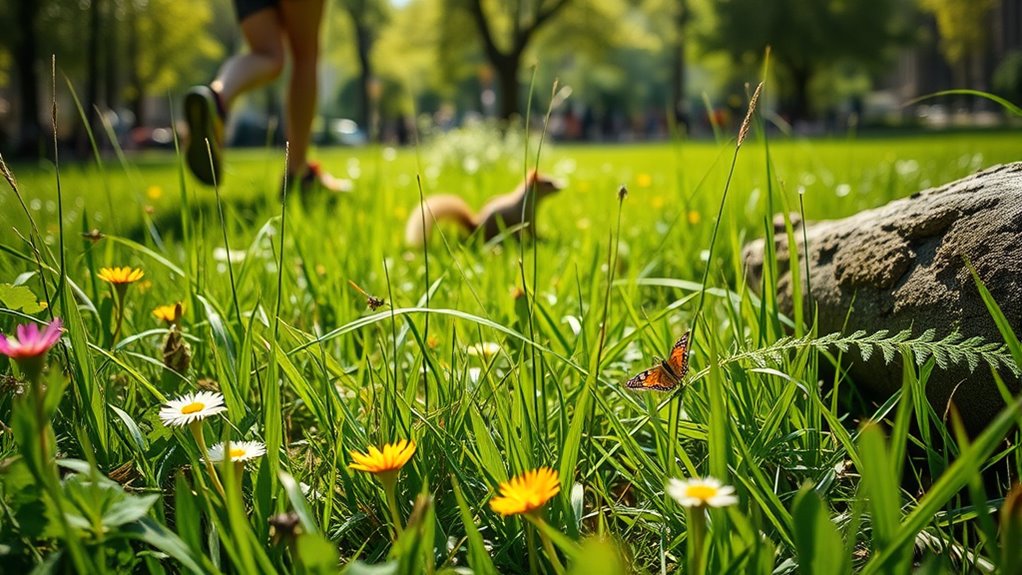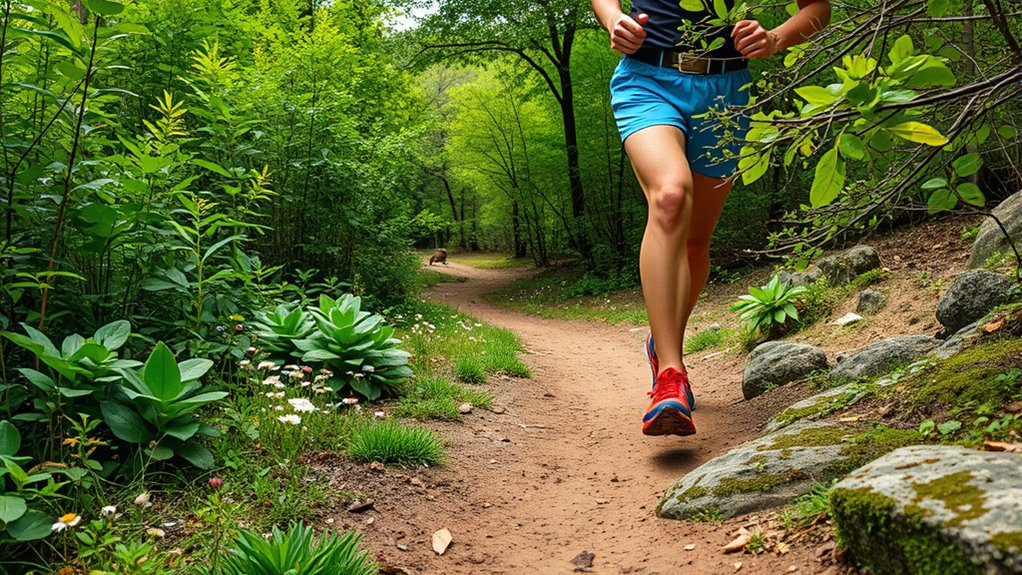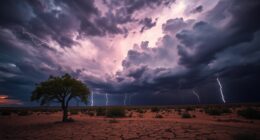In urban parks, you can find a rich variety of native species, from insects and birds to plants that depend on your mindful trail use. By sticking to designated paths and avoiding off-trail shortcuts, you help protect fragile habitats and prevent erosion or habitat loss. Supporting conservation efforts and respecting wildlife guarantees these green spaces remain vibrant ecosystems. Keep exploring how your trail running habits can make a real difference in preserving urban biodiversity.
Key Takeaways
- Urban parks harbor diverse native species, including insects, birds, and plants, forming complex ecosystems often unseen by visitors.
- Trail runners can protect biodiversity by staying on designated paths, minimizing habitat disturbance and erosion.
- Supporting native planting and invasive species removal helps preserve native habitats within city parks.
- Respecting wildlife and avoiding off-trail activities reduces stress and disturbance to sensitive species.
- Engaging in conservation efforts ensures urban green spaces continue to serve as vital refuges for native biodiversity.

Have you ever wondered how urban parks support a surprising variety of life? These green spaces are often seen as simple escapes from city hustle, but they’re also essential refuges for native species that have adapted to thrive in these environments. When you explore a city park, you’re not just enjoying a scenic backdrop; you’re witnessing a complex web of biodiversity. Native species, from insects and birds to small mammals and plants, find shelter and resources within these parks, helping maintain ecological balance. Your role as a trail runner can greatly influence the preservation of this habitat. By understanding how your activities impact native species and their habitat preservation, you become a key player in safeguarding urban biodiversity.
Urban parks serve as critical habitats for native species that might otherwise struggle to survive in heavily altered environments. These parks provide essential food sources, breeding grounds, and shelter, supporting a diverse array of wildlife. When you stick to designated trails and avoid trampling vegetation, you help prevent habitat destruction that could threaten these species. Many animals, especially ground-nesting birds and small mammals, rely on undisturbed patches of native vegetation. If trails become overgrown or eroded, it can lead to habitat fragmentation, making it harder for native species to find food and reproduce. Your mindful approach to trail running—staying on marked paths, avoiding off-trail shortcuts—ensures that their habitats remain intact and functional. Additionally, choosing parks that implement habitat preservation initiatives enhances your positive impact.
Sticking to designated trails preserves native habitats and supports local wildlife survival.
Protecting native species isn’t just about avoiding direct harm; it’s also about supporting habitat preservation efforts. Urban parks often face pressures from invasive species, pollution, and development, all of which threaten native habitats. As a trail runner, you can contribute to habitat preservation by participating in or supporting local conservation initiatives. For example, some parks organize native plant planting days or invasive species removal projects. These efforts help sustain native flora, which in turn supports native fauna. By choosing to run in parks that prioritize habitat preservation, you promote the health of these ecosystems and help ensure that native species continue to thrive amidst urbanization.
In essence, your presence in urban parks can be a force for good. By respecting trail boundaries, avoiding disturbance to wildlife, and supporting conservation efforts, you help maintain the delicate balance that allows native species to flourish. Remember, urban parks are more than just recreational spaces—they’re essential urban ecosystems that sustain biodiversity. Your mindful trail running can make a meaningful difference in protecting habitat preservation and supporting native species, ensuring these urban oases remain vibrant habitats for generations to come.
Frequently Asked Questions
How Do Urban Parks Contribute to Local Climate Regulation?
Urban parks influence local climate regulation by creating urban microclimates, which help cool surrounding areas and reduce heat island effects. By increasing green space benefits, you help absorb carbon dioxide, lower temperatures, and improve air quality. When you enjoy trail running in parks, you’re supporting these eco-friendly spaces that moderate temperature fluctuations and enhance overall environmental health. Your presence and activity contribute to maintaining healthier, more resilient urban microclimates for everyone.
What Are the Most Common Invasive Species in City Parks?
In city parks, invasive species like Japanese knotweed, Chinese privet, and garlic mustard often spread quickly, outcompeting native plants. You can help by practicing invasive plant identification and removing these species when safe. Protect native species by staying on designated trails and avoiding disturbance. Your efforts help preserve the park’s natural balance, ensuring native plants and wildlife thrive. Every little action makes a difference in maintaining healthy urban ecosystems.
How Can Trail Runners Identify Native Versus Invasive Plants?
You can identify native flora versus invasive species by observing plant characteristics like leaf shape, flower color, and growth patterns. Pay attention to plants you’re familiar with and compare them to known invasive species, which often have aggressive growth or unusual features. Use local guides or apps to help distinguish native plants from invasive ones. Recognizing these differences helps you protect the environment and support the health of urban parks.
Are There Specific Times When Wildlife Is Most Vulnerable?
Imagine wildlife as silent shadows, most vulnerable during nocturnal activity and breeding seasons. You should be especially cautious at dawn and dusk when animals are active and less visible. During breeding seasons, animals focus on survival, making them more sensitive to disturbances. By avoiding trail use during these critical times, you help protect their habitats, ensuring they thrive in urban parks. Your mindful presence supports the fragile balance of local ecosystems.
How Do Park Maintenance Practices Impact Biodiversity?
Park maintenance practices directly impact biodiversity by influencing native plant conservation and pesticide effects. When you adhere to eco-friendly methods, you help protect native species and reduce harmful chemical use that can harm wildlife. Avoiding pesticides and choosing native plants for landscaping support healthy ecosystems. Your efforts ensure that urban parks remain vibrant habitats, allowing wildlife to thrive and biodiversity to flourish, even amid regular maintenance activities.
Conclusion
As you explore urban parks, remember that every step you take reveals a world you might never notice—hidden biodiversity thriving beneath your feet. Sometimes, it feels like nature’s secrets are just waiting for you to uncover them, reminding us that even in busy city spaces, life persists quietly. By respecting and protecting these tiny ecosystems, you become part of a larger story—one where your presence helps guarantee these surprises continue to flourish for generations to come.










